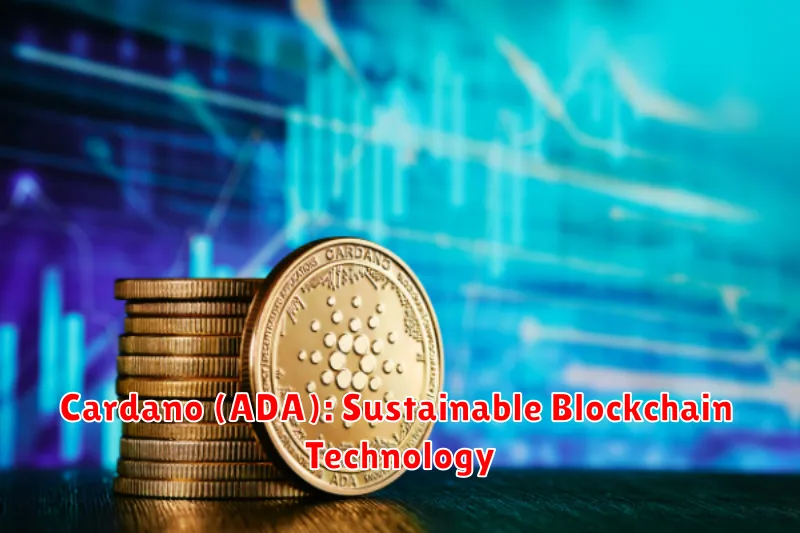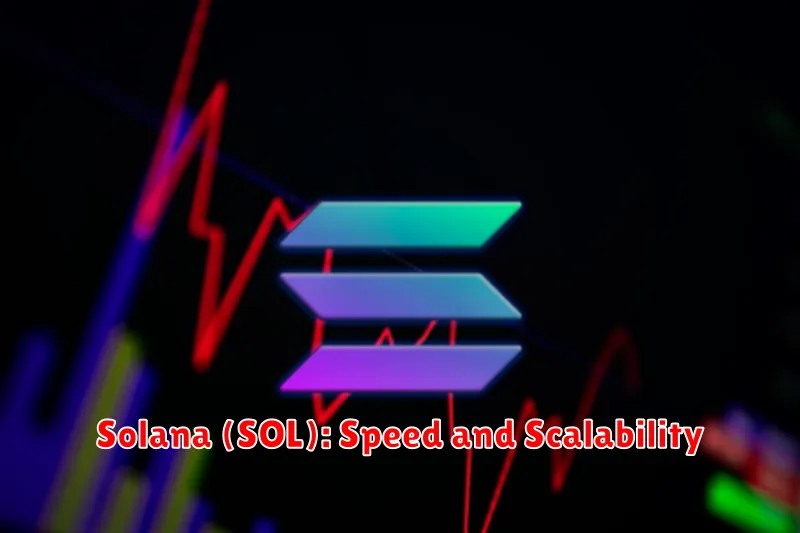Investing in cryptocurrency can be a lucrative venture, but choosing the right coins is crucial for long-term success. This article highlights the 5 best coins for long-term investment in 2025, analyzing their potential for growth and stability. Discover which cryptocurrencies offer the most promising returns and minimize risk in this ever-evolving market. Learn about the top 5 cryptocurrencies predicted to thrive in the next few years and make informed decisions about your investment portfolio.
Bitcoin (BTC): The First Cryptocurrency

Bitcoin (BTC), launched in 2009, holds the distinction of being the world’s first decentralized cryptocurrency. Created by an anonymous individual or group known as Satoshi Nakamoto, it introduced the concept of a peer-to-peer electronic cash system without relying on central authorities like banks or governments.
Bitcoin’s core innovation lies in its blockchain technology – a distributed, public ledger recording all transactions. This ensures transparency and immutability, enhancing security and trust. The limited supply of 21 million Bitcoins is another key feature contributing to its potential long-term value.
While volatility remains a characteristic of Bitcoin, its established history, widespread adoption, and ongoing technological development make it a compelling consideration for long-term investment. However, potential investors should carefully assess their risk tolerance before investing in any cryptocurrency.
Ethereum (ETH): The Leader in Smart Contracts

Ethereum stands as a leading platform for smart contracts, decentralized applications (dApps), and decentralized finance (DeFi). Its robust and adaptable architecture allows developers to build and deploy a wide array of applications, making it a cornerstone of the blockchain ecosystem.
Smart contracts, self-executing contracts with the terms of the agreement directly written into code, are a core function of Ethereum. This automation eliminates intermediaries and enhances transparency and security in various transactions, including financial exchanges, supply chain management, and digital identity verification.
The Ethereum Virtual Machine (EVM) is crucial for executing these smart contracts. Its functionality ensures that the code functions as intended, securely and predictably. This contributes significantly to Ethereum’s long-term viability and value proposition as a platform for innovation.
While facing competition, Ethereum maintains a significant first-mover advantage and a large, active developer community constantly enhancing its capabilities. This strong network effect makes Ethereum a compelling long-term investment prospect despite the emergence of competing platforms.
Scalability improvements, such as layer-2 solutions, are continually being developed and implemented to address limitations and enhance the overall user experience, further solidifying its position as a dominant force in the smart contract arena.
Cardano (ADA): Sustainable Blockchain Technology

Cardano (ADA) distinguishes itself through its commitment to sustainability and a scientifically driven approach to blockchain development. Unlike many cryptocurrencies that prioritize speed above all else, Cardano prioritizes scalability and energy efficiency.
Its layered architecture allows for enhanced security and facilitates the development of decentralized applications (dApps). This layered approach also contributes to its energy efficiency, making it a more environmentally friendly option compared to some other prominent cryptocurrencies.
The Ouroboros proof-of-stake (PoS) consensus mechanism is a core component of Cardano’s sustainability efforts. PoS significantly reduces energy consumption compared to the energy-intensive proof-of-work (PoW) mechanism used by Bitcoin. This makes Cardano a more responsible and sustainable investment choice for the long term.
Furthermore, Cardano’s focus on peer-reviewed research and academic collaboration ensures a robust and well-thought-out system, contributing to its long-term viability and potential for growth.
Polkadot (DOT): Interoperable Blockchains

Polkadot (DOT) is a blockchain interoperability protocol designed to connect different blockchains, allowing them to share information and transactions seamlessly. This interoperability is a key feature that differentiates Polkadot from other cryptocurrencies. It aims to create a multi-chain ecosystem, overcoming the limitations of isolated blockchains.
DOT serves as the native cryptocurrency of the Polkadot network, used for securing the network through staking and governance. Holding DOT allows users to participate in the network’s decision-making process and validate transactions. Its scalability and security features are attractive for developers building decentralized applications (dApps).
The potential for long-term growth in Polkadot is tied to the increasing demand for interoperable blockchain solutions. As the cryptocurrency landscape matures and more complex applications emerge, the ability to connect diverse blockchains becomes crucial. Polkadot’s innovative approach positions it as a strong contender in the future of blockchain technology.
Investment considerations should include an understanding of the inherent risks associated with cryptocurrency investments. Market volatility and technological advancements within the blockchain space can influence the price of DOT. Thorough research is essential before investing in any cryptocurrency.
Solana (SOL): Speed and Scalability

Solana stands out for its impressive speed and scalability. Unlike many other blockchains, Solana utilizes a novel architecture that allows for significantly higher transaction throughput.
Its innovative Proof-of-History (PoH) consensus mechanism, combined with its parallel processing capabilities, enables Solana to process thousands of transactions per second (TPS), far exceeding the capabilities of many competing networks. This high TPS contributes to faster confirmation times and lower transaction fees, making it a compelling option for various applications.
However, it’s important to note that while Solana boasts high theoretical TPS, real-world performance can fluctuate. Network congestion can sometimes impact transaction speeds. Furthermore, the complexity of its architecture has led to past network outages, highlighting the ongoing need for improvements in its reliability and stability.
Despite these challenges, Solana’s potential for scalability remains a key factor driving its long-term investment prospects. Continued development and improvements in its infrastructure could address current limitations and solidify its position as a leading blockchain platform.
